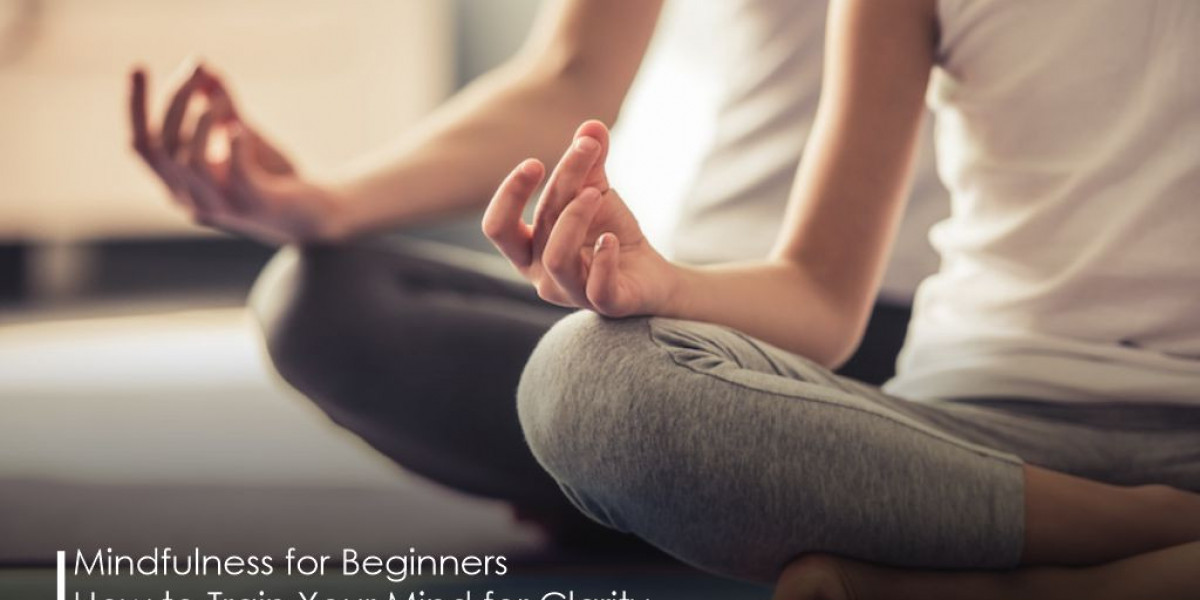In today’s fast-paced world, the mind is constantly juggling thoughts, tasks, deadlines, and digital distractions. As a result, mental clarity becomes difficult, and even simple decisions feel overwhelming. This is why more people are embracing mindfulness-a simple yet powerful practice that helps you become present, calm, and focused.
If you are just starting your mindfulness journey, this guide will help you understand its basics and how you can train your mind for greater clarity and peace.
1. What Is Mindfulness?
Mindfulness means being fully present in the moment without judgment. It allows you to observe your thoughts, emotions, and surroundings with awareness. Instead of reacting impulsively, you learn to respond with calmness.
In simple terms:
Mindfulness helps you shift from automatic thinking to conscious living.
This practice is widely taught across many meditation systems, including Rajyoga Meditation, which focuses on strengthening the mind through awareness, positive thinking, and inner silence.
2. Why Mindfulness Is Important for Beginners
Modern life brings constant stress, information overload, and emotional pressure. Beginners often struggle with:
Overthinking
Mental confusion
Lack of focus
Restlessness
Low productivity
Emotional imbalance
Mindfulness helps bring balance back to the mind. It teaches you how to pause, breathe, observe, and center yourself.
3. How Mindfulness Brings Mental Clarity
Mental clarity means having a focused, calm, and organized mind. Mindfulness enhances clarity through:
• Slowing down the mind
Your thoughts become calmer and more structured.
• Reducing unnecessary mental noise
You notice which thoughts matter and which are distractions.
• Improving focus
You are present in whatever you are doing.
• Increasing emotional stability
You don’t react instantly-you respond mindfully.
Even a few minutes of daily mindful awareness can dramatically improve your mental clarity and decision-making.
4. Simple Mindfulness Techniques for Beginners
1. Mindful Breathing
Sit comfortably and focus on your breath. Observe the air entering and leaving your body.
If your mind wanders (which it will), gently bring it back to the breath.
This exercise brings instant calm.
2. Thought Awareness Practice
Close your eyes and watch your thoughts as an observer.
Don’t judge or suppress them-just observe.
This helps you understand your thought patterns and reduces overthinking.
3. Sensory Mindfulness
Focus on what you can hear, see, touch, smell, or taste in the present moment.
This grounds your attention and pulls your mind out of stress or anxiety.
4. Mindful Walk
Walk slowly and focus on the movement of your feet, your breath, and your surroundings.
This helps release tension and refresh the mind.
5. One-Task Mindfulness
Instead of multitasking, choose one task at a time and give it full attention.
This boosts productivity and prevents burnout.
5. Rajyoga Meditation: A Powerful Way to Deepen Mindfulness
Rajyoga, taught by the Brahma Kumaris, is one of the most practical and accessible ways for beginners to start mindfulness.
Why? Because:
No rituals
No chanting
No specific posture
No physical strain
Can be practiced anywhere
Rajyoga focuses on awareness, positive thoughts, and connecting with the inner self.
It naturally trains the mind to stay calm, focused, and clear. Many people in cities like Gurugram are turning to Meditation Centres to learn Rajyoga as part of their mindfulness journey.
6. Benefits of Practicing Mindfulness Daily
✔ Better focus
You think clearly and handle work efficiently.
✔ Improved emotional balance
You respond thoughtfully instead of reacting impulsively.
✔ Reduced stress & anxiety
You develop a calm inner space that stays steady throughout the day.
✔ Increased self-awareness
You understand your thoughts, emotions, and triggers better.
✔ Better relationships
Mindfulness helps improve communication, empathy, and listening skills.
✔ Enhanced productivity
A clear mind is more creative, efficient, and solution-oriented.
7. How Gurugram Residents Can Start Their Mindfulness Journey
Gurugram’s fast-paced corporate lifestyle makes mindfulness essential.
Beginners can start by:
• Visiting a Meditation Centre in Gurugram
These centres offer guided mindfulness and Rajyoga sessions.
• Joining beginner-friendly workshops
Ideal for people just starting meditation.
• Practicing short daily exercises
Even 10 minutes a day is enough to see results.
• Attending group meditation sessions
The collective energy helps deepen the practice.
• Learning through online or offline courses
Beginner-level programs can help you build consistency.
By choosing a calm, structured environment like a Meditation Centre, beginners can learn mindfulness with proper guidance.
8. Common Mistakes Beginners Make (And How to Avoid Them)
❌ Expecting instant results
Mindfulness is a slow, gentle process.
Consistency matters more than speed.
❌ Overthinking during practice
It’s normal for thoughts to come.
The goal is not to stop them but to observe them.
❌ Practicing only when stressed
Make mindfulness part of your daily routine, not an emergency tool.
❌ Multitasking during mindfulness
Be fully present in the moment for real results.
Avoiding these mistakes helps beginners progress faster and enjoy deeper clarity.
Conclusion: Mindfulness Starts with One Simple Step
Mindfulness is not a complicated practice-it’s simply the art of being present. With regular practice, beginners can experience a calmer mind, clearer thoughts, and a more balanced life. To support your journey, many people explore well-known meditation centres in the city, such as BK Gurugram, where guided Rajyoga sessions help deepen awareness and inner stability.
Whether you start at home or visit a Meditation Centre in Gurugram, the journey to mindfulness begins with awareness-and even a few minutes each day can create meaningful positive change.







